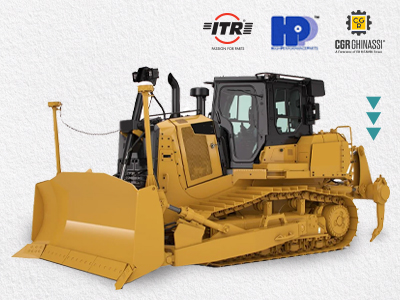The Engine of Progress: Understanding the Bulldozer Powertrain
The Engine of Progress: Understanding the Bulldozer Powertrain
The bulldozer, a symbol of strength and resilience, is an essential tool in construction, mining, and land development. But what powers this formidable machine, allowing it to push through tough terrain and move mountains (figuratively, of course)? The answer lies in the complex yet vital system known as the powertrain.
The Powertrain Explained:
The powertrain is the heart of a bulldozer, responsible for converting engine power into usable force that drives the machine’s wheels and implements (like the blade and ripper). It typically consists of several key components working in harmony:
- Engine: The starting point, the engine generates the power through the combustion of fuel (usually diesel) and transmits it to the next component.
- Clutch: This acts as a disconnect switch, allowing the engine to run independently while engaging or disengaging power transfer to the drivetrain.
- Transmission: The transmission manipulates the engine’s power output, changing gears to optimize speed and torque for different operating conditions. Bulldozers often utilize hydrostatic transmissions, which offer smooth, stepless control over speed and direction.
- Final Drive: This component transfers the power from the transmission to the wheels, reducing the rotational speed and increasing torque for powerful operation.
Different Types, Different Needs:
While the basic components remain similar, the specific configuration of a bulldozer powertrain can vary depending on several factors:
- Size and application: Larger, heavy-duty bulldozers often require more powerful engines and transmissions compared to smaller, more maneuverable models.
- Terrain: Machines working in challenging environments like steep slopes or soft soil might need features like variable traction control or high-ground clearance, impacting the powertrain design.
- Manufacturer preferences: Different manufacturers may incorporate unique technologies or variations in component selection to differentiate their offerings.
Beyond the Basics:
Modern bulldozer powertrains often incorporate additional features to enhance performance, efficiency, and operator experience:
- Torque converters: These further increase torque output, allowing the engine to operate at optimal RPMs while providing more power for demanding tasks.
- Electronic controls: Sophisticated electronic systems can manage transmission shifting, engine speed, and other functions for improved efficiency and ease of operation.


